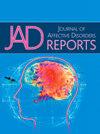Inside the journey: A qualitative study of intravenous ketamine therapy for treatment-resistant depression
Q3 Psychology
引用次数: 0
Abstract
Introduction
Treatment-resistant depression (TRD) affects over 30 % of patients with depression and is associated with high morbidity and mortality. Intravenous (IV) ketamine has shown rapid and robust antidepressant effects for TRD. However, limited data exist on long-term maintenance and patient experiences, especially in North America. This study aims to explore the lived experiences of individuals receiving IV ketamine for TRD in Saskatchewan, Canada.
Methods
This qualitative study involved semi-structured interviews with 19 individuals receiving IV ketamine at the Linden Medical Centre. Participants were included if they were over 18 years of age and received IV ketamine for TRD. Data were analyzed using grounded theory methodology to identify emerging themes.
Results
Key themes included the acute effects of ketamine during treatment, which varied among patients but generally involved psychological relief and altered perceptions. Participants noted significant improvements in mood, outlook on life, and daily functioning. However, barriers such as treatment cost, accessibility, and stigma were prevalent. Psychosocial factors and the clinic environment also substantially influenced treatment outcomes.
Interpretation
The findings highlight the profound impact of IV ketamine on patients with TRD, emphasizing the importance of a supportive clinic environment and addressing barriers to accessibility. Despite the financial burden and limited accessibility, ketamine treatments resulted in meaningful improvements, including reduced suicidality.
Conclusion
This study underscores the need for further research on individual predictors of ketamine response, cost-effectiveness, and educational materials to set realistic patient expectations. Understanding patient experiences can help optimize ketamine therapy for TRD, ultimately enhancing treatment outcomes.
旅程内部:静脉注射氯胺酮治疗难治性抑郁症的定性研究
难治性抑郁症(TRD)影响了30%以上的抑郁症患者,并与高发病率和死亡率相关。静脉注射氯胺酮对TRD显示出快速和强大的抗抑郁作用。然而,关于长期维持和患者经验的数据有限,特别是在北美。本研究旨在探讨加拿大萨斯喀彻温省接受静脉注射氯胺酮治疗TRD的个体的生活经历。方法本定性研究采用半结构化访谈法,对19名在林登医学中心接受静脉注射氯胺酮的患者进行访谈。如果参与者年龄超过18岁并接受静脉注射氯胺酮治疗TRD,则包括在内。使用扎根理论方法分析数据以确定新兴主题。结果氯胺酮在治疗期间的急性作用在患者中有所不同,但通常涉及心理缓解和观念改变。参与者的情绪、人生观和日常功能都有了显著改善。然而,诸如治疗费用、可及性和耻辱感等障碍仍然普遍存在。心理社会因素和临床环境也显著影响治疗结果。研究结果强调了静脉注射氯胺酮对TRD患者的深远影响,强调了支持性临床环境和解决可及性障碍的重要性。尽管存在经济负担和有限的可及性,氯胺酮治疗取得了有意义的改善,包括降低自杀率。结论本研究强调需要进一步研究氯胺酮反应的个体预测因素、成本效益和教育材料,以设定切合实际的患者期望。了解患者的经历有助于优化氯胺酮治疗TRD,最终提高治疗效果。
本文章由计算机程序翻译,如有差异,请以英文原文为准。
求助全文
约1分钟内获得全文
求助全文
来源期刊

Journal of Affective Disorders Reports
Psychology-Clinical Psychology
CiteScore
3.80
自引率
0.00%
发文量
137
审稿时长
134 days
 求助内容:
求助内容: 应助结果提醒方式:
应助结果提醒方式:


